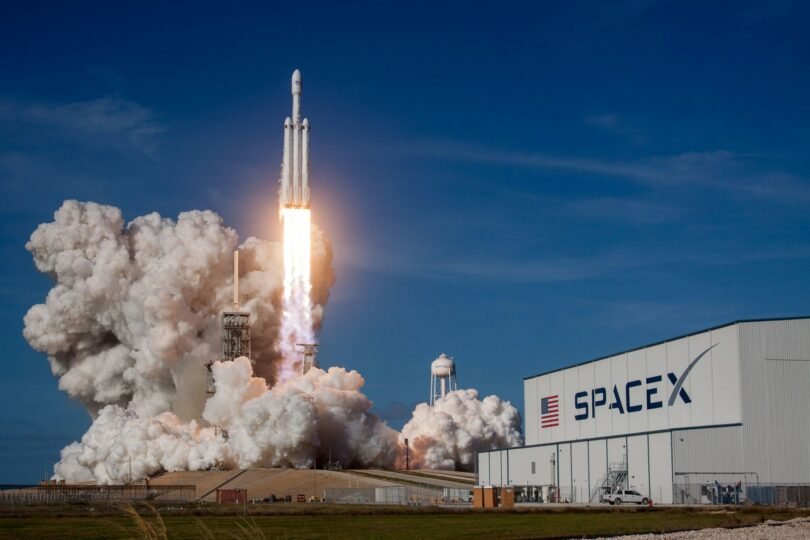A New Era of Space Exploration
Space exploration has always been a fascinating frontier for humanity. From the moment the Soviet Union launched Sputnik 1 in 1957 to Neil Armstrong’s first step on the Moon in 1969, space has remained the ultimate symbol of human progress and ambition. Today, however, space exploration is no longer dominated solely by government agencies such as NASA or Roscosmos. Private companies, particularly SpaceX and Blue Origin, have emerged as leading players in what many call the “New Space Race.”
Unlike the Cold War-era rivalry between superpowers, this modern race is fueled by technological innovation, commercial opportunities, and the dream of establishing human settlements on other planets—especially Mars. Elon Musk’s SpaceX and Jeff Bezos’ Blue Origin stand at the forefront of this race, each with distinct visions, strategies, and technologies aimed at making interplanetary colonization a reality.
This article will provide an in-depth look at SpaceX, Blue Origin, and their competition in the pursuit of Mars colonization, while also exploring the broader implications for humanity’s future in space.
The Historical Context of the New Space Race
The Cold War Space Race
The original space race between the United States and the Soviet Union was about proving technological superiority. It gave us milestones like Yuri Gagarin’s orbit in 1961 and the Apollo 11 Moon landing in 1969. While groundbreaking, these achievements were largely driven by political rivalry, not sustainable colonization.
Transition to Private Spaceflight
After decades of government-led programs, the 21st century witnessed a shift. NASA retired its space shuttle program in 2011, and commercial companies began filling the gap. The privatization of space exploration has since unlocked unprecedented innovation. Unlike traditional agencies bogged down by bureaucracy, private firms operate with flexibility, competition, and commercial incentives.
SpaceX: Elon Musk’s Vision of a Multi-Planetary Civilization
Founding and Mission
Founded in 2002 by Elon Musk, SpaceX (Space Exploration Technologies Corp.) set out with the bold mission: “to make life multi-planetary.” Musk has repeatedly emphasized his belief that humanity must colonize Mars to safeguard the future of our species against existential threats such as nuclear war or asteroid impacts.
Technological Breakthroughs
Falcon Rockets
The Falcon 1 and later Falcon 9 rockets introduced the concept of reusable launch vehicles, drastically lowering costs. SpaceX demonstrated the ability to land boosters vertically, revolutionizing the economics of space travel.
Dragon Capsule
The Dragon spacecraft became the first commercial vehicle to deliver cargo to the International Space Station (ISS), and later carried astronauts as part of NASA’s Commercial Crew Program.
Starship
The crown jewel of Musk’s Mars ambitions is Starship, a fully reusable, stainless-steel rocket designed to carry up to 100 people. Standing nearly 400 feet tall, Starship is envisioned as the vehicle that will transport humans and supplies to Mars. It is designed to refuel in orbit, allowing for longer interplanetary journeys.
Mars Colonization Strategy
Musk’s plan involves sending cargo missions first, followed by human crews. The idea is to establish a self-sustaining city on Mars with everything from power plants to agriculture. SpaceX aims for ambitious timelines, with Musk initially predicting human landings on Mars in the mid-2020s (though experts believe the 2030s or beyond is more realistic).
Blue Origin: Jeff Bezos’ Road to the Stars
Founding and Mission
Jeff Bezos founded Blue Origin in 2000, even before SpaceX. Its motto, “Gradatim Ferociter” (Latin for “Step by Step, Ferociously”), reflects a slower but deliberate approach. Unlike Musk, Bezos does not focus solely on Mars. His vision is broader: to create the infrastructure for millions of people to live and work in space.
Technological Breakthroughs
New Shepard
Blue Origin’s New Shepard is a suborbital rocket designed for space tourism. It has successfully taken paying passengers on brief journeys past the Kármán line, offering a taste of weightlessness and a view of Earth from space.
New Glenn
The company is developing New Glenn, a massive orbital rocket named after astronaut John Glenn. Like SpaceX’s Falcon 9, it will feature reusable boosters.
Blue Moon and Orbital Ambitions
Bezos has expressed strong interest in building lunar infrastructure. Blue Origin has designed the Blue Moon lander, a vehicle intended to deliver cargo and eventually humans to the Moon’s surface.
Long-Term Vision
Bezos believes humanity’s future lies in building O’Neill cylinders—giant rotating space habitats that can house millions of people. He envisions Earth becoming a “residential zone” while heavy industry moves to space. While Mars is not his primary goal, Blue Origin’s technological advancements could play a crucial role in humanity’s expansion into the solar system.
Comparing Visions: Mars vs. Space Habitats
Elon Musk’s Mars-first vision and Jeff Bezos’ space-habitats-first vision highlight two very different approaches:
-
Musk’s Strategy (SpaceX):
-
Focus on colonizing Mars as a backup for humanity.
-
Starship as the main vehicle for interplanetary colonization.
-
Emphasis on rapid innovation and ambitious timelines.
-
-
Bezos’ Strategy (Blue Origin):
-
Focus on building permanent infrastructure in near-Earth space.
-
O’Neill cylinders as scalable habitats.
-
Slower, methodical approach with a long-term infrastructure mindset.
-
Both strategies aim for sustainability but differ fundamentally in execution. Musk prioritizes a bold leap to Mars, while Bezos advocates building stepping stones closer to Earth first.
Read More: How Small Rockets Are Changing Satellite Launches?
The Challenges of Colonizing Mars
Technical Challenges
-
Radiation Exposure – Mars lacks a protective magnetic field, exposing humans to harmful cosmic rays.
-
Life Support Systems – Providing breathable air, clean water, and sustainable food sources will be critical.
-
Transport and Refueling – Developing reliable spacecraft capable of round trips is complex and costly.
-
Communication Delays – Messages between Earth and Mars can take up to 22 minutes each way.
Psychological and Social Challenges
-
Isolation: Astronauts will live far from Earth for years.
-
Mental Health: Coping with confinement, monotony, and limited social contact.
-
Governance: Establishing laws and conflict-resolution systems in a new society.
Economic Challenges
-
Funding: Even with reusable rockets, Mars colonization requires trillions of dollars.
-
Commercial Viability: Beyond science and survival, will there be economic incentives like mining or tourism?
NASA and International Collaboration
While private companies lead the charge, NASA and international partners play vital roles. NASA’s Artemis program aims to return humans to the Moon, with the goal of using it as a stepping stone for Mars missions. SpaceX has already won contracts to develop a lunar lander version of Starship.
Collaboration with agencies in Europe, Japan, and even China could be crucial. The future of space exploration may be less about competition and more about partnerships across governments and companies.
The Role of Competition
Competition has always been a driver of progress. SpaceX and Blue Origin push each other to innovate faster and cheaper. For instance:
-
SpaceX’s success in reusability pressured Blue Origin to accelerate its New Glenn development.
-
Blue Origin’s entry into lunar landers forced NASA to diversify partnerships.
This rivalry benefits humanity by ensuring rapid advancements in technology, reduced costs, and increased safety.
The Future of Humanity in Space
Possible Outcomes by 2050
-
Permanent Lunar Bases: Likely to be established as staging grounds for Mars.
-
First Mars Settlement: SpaceX could send the first crews in the 2030s.
-
Commercial Space Economy: Mining asteroids, space tourism, and satellite industries could thrive.
-
Space Habitats: Bezos’ dream of O’Neill cylinders might begin materializing in the mid-21st century.
Ethical Considerations
-
Planetary Protection: Ensuring we don’t contaminate Mars with Earth microbes.
-
Equity in Access: Avoiding a scenario where only billionaires benefit from space.
-
Colonialism Concerns: Addressing questions of ownership and governance in space.
Conclusion:
The race to Mars is not just about Space X and rival billionaires—it represents the next chapter of human evolution. SpaceX’s audacious leap toward Mars and Blue Origin’s careful construction of space infrastructure embody two competing yet complementary visions.
Whether humanity’s first permanent home beyond Earth will be on Mars or inside a massive orbital habitat remains uncertain. What is clear, however, is that private companies have fundamentally changed the trajectory of space exploration. The combined efforts of SpaceX, Blue Origin, NASA, and international partners may soon turn science fiction into reality.
The race to Mars is not merely about reaching another planet—it is about redefining what it means to be human in the cosmos.







